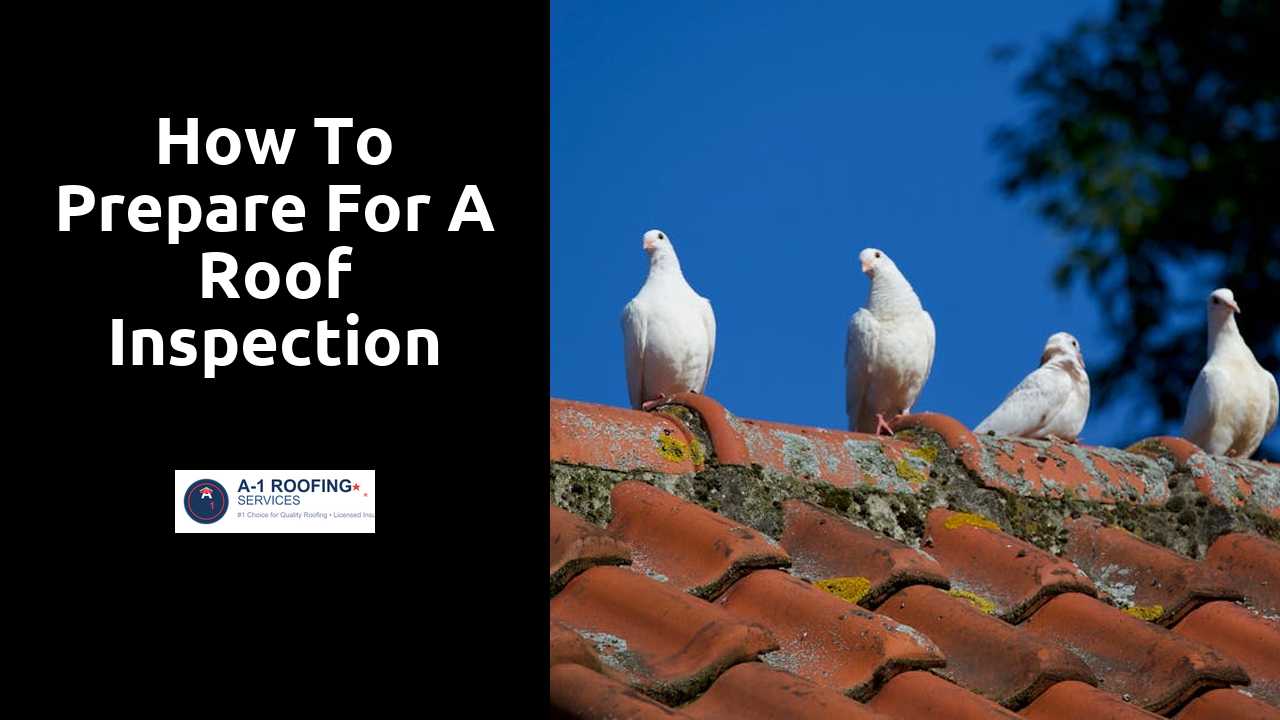
How to Prepare for a Roof Inspection
Table Of Contents
Documenting the Current Condition
Before an inspection, assessing the state of your roof can provide valuable insights. Start by walking around the exterior of your home to visually inspect the roof's surface. Look for any obvious signs of wear such as curling shingles, moss growth, or debris accumulation. Noting these observations down will help during discussions with the inspector and provide context for their evaluation.
Inside the home, check for any water stains or sagging ceilings that could indicate leaks or structural issues in the roof. Documenting these internal signs is equally essential as they can signify problems that may not be immediately visible from the outside. Taking detailed notes in conjunction with photographs will create a comprehensive record of your roof's current condition, facilitating a more informed inspection process.
More tips and tricks can be found here.
Taking Notes and Photos for Reference
Keeping thorough notes during a roof inspection is essential for understanding any issues that may arise. Documenting observations about specific areas of concern can provide clarity when discussing findings with the inspector. Jot down details regarding the condition of shingles, flashing, and gutters. This information can help when scheduling repairs or deciding on maintenance.
Taking photographs of various sections of the roof complements your notes effectively. Visual records allow you to reference specific problems later and provide a clear picture of current conditions. Capture images of any visible damage, wear, or unusual features, ensuring you have good lighting for clarity. These photos will be invaluable for future discussions and evaluations.
Common Issues Found in Roof Inspections
Roofs can encounter a variety of problems that may compromise their integrity. Missing shingles often lead the list of issues, making it easy for water to penetrate and cause damage to the underlying structure. Other common concerns include granule loss, which can weaken shingles over time, and curled edges that indicate aging materials. Additionally, improper flashing around chimneys and vents can allow leaks to form, creating potential hazards for homeowners.
Leaks can manifest in various areas, particularly around roof penetrations like skylights and valleys. Staining on ceilings or walls often indicates that there is an active leak, prompting the need for further inspection. Mold growth can also point to prolonged moisture issues, which may require immediate attention. Ensuring that gutters are clear is crucial, as clogged gutters can lead to water pooling on the roof, exacerbating existing problems. Regular inspections help identify these issues before they develop into more costly repairs.
Identifying Signs of Wear and Damage
Regular maintenance of a roof is crucial for ensuring its longevity. Homeowners should look for cracked, curled, or missing shingles, which can indicate aging or damage. Granule loss on asphalt shingles is another sign to watch for, as it can lead to reduced weather resistance. Additionally, inspect flashing around chimneys and vents for signs of rust or gaps, as these can lead to leaks if not addressed promptly.
Inside the home, signs of roof damage can manifest as water stains on ceilings or walls. Mold or mildew growth in attic spaces may signal an ongoing moisture problem. Checking for excessive granules in gutters can also provide insight into shingle wear. Each of these indicators helps in assessing the roof's condition and determining the need for repairs or replacement before more severe damage occurs.
Discussing Findings with the Inspector
After the inspection concludes, it’s essential to engage in a detailed discussion with the inspector about their findings. Take the opportunity to ask for clarification on any recommendations or observations. Understanding the specifics helps in creating a prioritized action plan for any necessary repairs or maintenance. It’s also beneficial to inquire about the next steps for addressing identified issues.
Be proactive in this conversation by asking about the overall health of the roof and any potential concerns that may arise in the future. Requesting advice on long-term maintenance strategies can greatly extend the life of the roof. Ensuring clear communication during this phase establishes a solid foundation for ongoing care and attention to your roofing needs.
Questions to Ask After the Inspection
After the roof inspection is complete, engaging your inspector in a discussion about their findings is essential. Begin by asking for a detailed explanation of any issues they discovered. Understanding the severity and implications of these problems can help you prioritize necessary repairs or maintenance. It's also helpful to inquire about the potential lifespan of your roof in relation to its current condition.
Inquiring about the recommended next steps can provide clarity on how to address any concerns. Ask about the urgency of repairs and whether there are temporary solutions available while you evaluate your options. Additionally, it may be beneficial to discuss any preventive measures you can take to extend the life of your roof. Having a clear understanding of all these aspects will aid in making informed decisions moving forward.
Related Links
The Role of Roof Inspections in Preventative MaintenanceThe Importance of Regular Roof Inspections